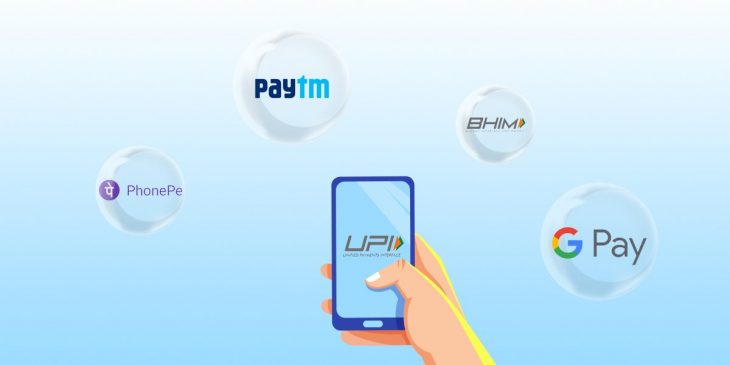It’s fair to say that whatever goals NPCI had when they launched UPI are now more than achieved. UPI QR codes are now practically everywhere. You can find them at your local general store, with roadside vendors, and they are even stuck somewhere up in an auto-rickshaw. But how many of us actually know how UPI works? Let’s take a closer look at this amazing innovation that has transformed the way we do business.
First, what is UPI?
UPI, or Unified Payments Interface, is a system developed by the National Payments Corporation of India (NPCI) and regulated by the Reserve Bank of India (RBI). It allows users to send and receive money instantly using just their phone numbers or unique identifiers called UPI IDs. Unlike other payment methods, such as NEFT and IMPS, UPI also lets users or merchants request money from others by sending a simple message through their bank app.
One of the reasons why UPI is so successful is that it’s completely free of charge. You can transfer any amount of money to anyone, anytime, without paying any extra fees to NPCI. You can also use UPI to make small payments at local shops, as there is no minimum limit on the transaction amount. Plus, UPI has a handy feature called AutoPay, which lets you set up recurring payments for your bills and subscriptions, saving you time and hassle.
Read More: Govt reverses decision on laptop, tablets import restrictions; know why and what it means
So how does UPI work?
It’s quite simple, really. All you need is a UPI-enabled app on your phone, and you can link multiple bank accounts or wallets to it. Then, you can use the app to send or receive money without sharing your account details or IFSC codes. UPI uses a PUSH and PULL mechanism for this purpose. To send money, you select the Pay or Send option in the app, enter the recipient’s UPI ID or mobile number, the amount, and the bank account or wallet from which the money is to be debited. Then, you enter your UPI PIN to confirm the transaction.
To receive money, you select the Collect or Request Money option in the app, enter the payer’s Virtual Payment Address (VPA) and the amount, and the bank account in which the money is to be credited. The payer then enters their UPI PIN to authorise the transaction request.
UPI transactions are processed in real-time, using the existing NEFT, RTGS, and IMPS systems for settlements. UPI also ensures a high level of security and privacy for your transactions. It requires you to enter your MPIN or use biometric authentication to validate transactions. It also encrypts your data using advanced protocols to prevent any unauthorised access.
Read More: ESIC Added 19.42 Lakh New Members In August
Why does each UPI app set up a different UPI ID?
You may have noticed that different apps have different UPI IDs for you. This is because different apps use different banks for handling customer transactions. Your UPI ID may vary depending on the bank you have linked the account with. For example, in Google Pay, some of the common UPI IDs are “@oksbi”, “@okhdfcbank”, “@okaxis” and “@okicici”.
Are UPI transactions safe?
If you’re wondering whether UPI transactions are safe to use, you can breathe a sigh of relief. UPI transactions are backed by robust safety protocols and stringent regulatory measures established by the RBI, so you don’t have to worry about your money or your data.
UPI transactions are protected by advanced encryption protocols such as TLS, AES, and PKI, which ensure that sensitive information including user credentials and transaction data remains confidential during transmission. You also don’t have to share your bank account details with anyone, since UPI uses VPA, or Virtual Payment Address, as the identifier for UPI transactions. This reduces the risk of information exposure and unauthorised access to your bank account.
Another security feature of UPI is that it is device-specific. This means that you can only access your UPI account from the device that you have registered it with. This prevents anyone from using your UPI account from a different device, adding an extra layer of security. Moreover, the RBI mandates strong authentication methods for UPI transactions, such as 2FA and biometric verification.
But while NPCI has ensured that everything is safe and secure from their end – NPCI sources say UPI accounts cannot be hacked – fraudsters can still exploit consumer vulnerabilities by gaining access to users’ information or devices. For instance, in 2022, there were more than 95,000 UPI fraud cases reported.
What are some of the biggest upcoming updates to UPI?
In August, the RBI announced that UPI is getting a major upgrade with several new features. These features are expected to make UPI more user-friendly, convenient, and accessible for millions of Indians who rely on digital payments every day. Let’s take a look at them.
Conversational Payments with AI: This feature will enable users to engage in conversation with AI-powered systems to make payments in a safe and secure environment. It will work on both smartphones and feature phones, helping to increase digital penetration in the country. It will be available in Hindi and English at first, and then in more Indian languages later.
Offline UPI payments using NFC: This feature will facilitate offline transactions using near-field communication (NFC) technology through UPI Lite. This will make payments easier, as users will only have to tap their smartphone on the point-of-sale (PoS) machine. This feature will also ensure speed, with minimal transaction decline, in situations where internet or telecom connectivity is weak or not available.
Increased per transaction limit for UPI Lite: RBI has also proposed to increase the per transaction limit for UPI Lite to Rs 500 from Rs 200 in offline mode. This will encourage wider adoption of this mode of payments and bring in more use cases into this mode. However, the overall limit remains at Rs 2,000 to limit the risks associated with relaxing two-factor authentication.
What is UPI 2.0?
UPI 2.0 is the latest version of UPI and offers several new features and improvements over UPI, such as overdraft facility, one-time mandate, invoicing, and signed intent and QR. These features aim to enhance the security, convenience, and transparency of UPI transactions for both customers and merchants.
For example, customers can now link their overdraft accounts to UPI 2.0 and make payments from them, or they can pre-authorise transactions and pay later with the one-time mandate facility. They can also verify the invoice sent by the merchant before making the payment, or check the authenticity of the merchant by scanning the signed QR code. UPI 2.0 is a significant evolution of UPI technology that promises to make digital payments more accessible and efficient for everyone.



































